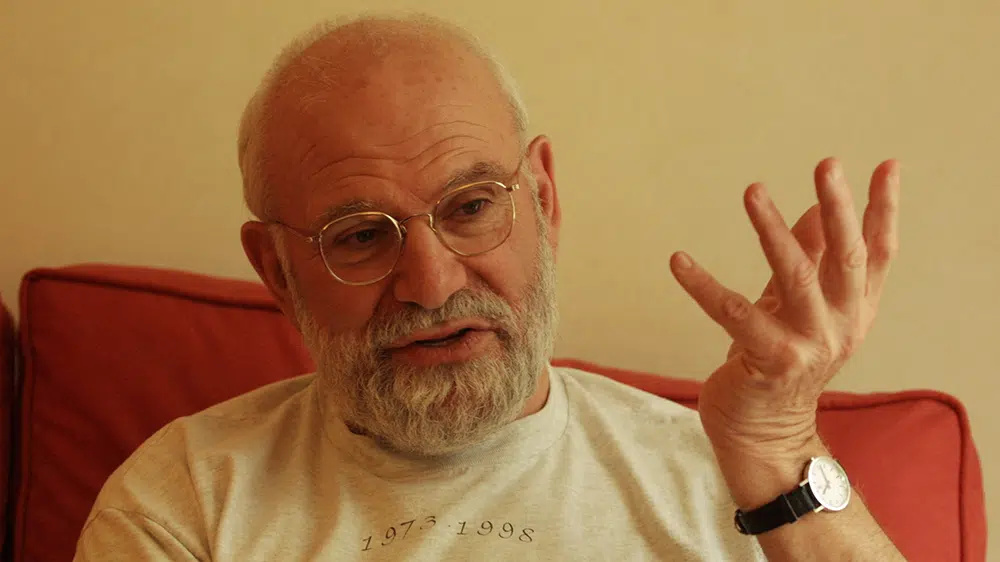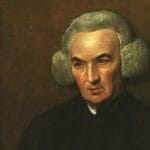Get ready to dive into the captivating world of Dr. Oliver Sacks, a genius neurologist who revolutionized our understanding of the human mind. Join us on an incredible journey as we uncover fascinating facts about his life, career, and the unique perspective that shaped his groundbreaking work. From his pioneering research on brain disorders to his heartfelt reflections on the human experience, Dr. Sacks left an indelible mark on medicine and beyond.
Fascinating Facts About Dr. Oliver Sacks
Dr. Oliver Sacks wasn’t your average physician. He was more akin to a detective of the mind, perpetually fascinated by human experiences, particularly the intricacies of the brain. He illuminated the richness of individual lives, proving that a diagnosis doesn’t define a person. Here’s what made him so extraordinary:
- Empathy as his compass: Dr. Sacks recognized the limitations of traditional neurology, which often prioritized diagnoses over understanding the individual. He championed a compassionate approach, prioritizing genuine listening and connecting with his patients on a human level.
- The art of storytelling: Dr. Sacks possessed a rare gift for translating complex neurological concepts into captivating narratives that resonated with a broad audience. His writing, accessible to those outside the medical field, inspired countless individuals and profoundly influenced healthcare practices.
- Music as medicine: A gifted pianist himself, Dr. Sacks recognized the profound impact of music on the brain. His work explored how musical experiences could be harnessed for therapeutic purposes, opening up new avenues for understanding and treating neurological conditions.
- Bridging the science-humanity divide: Dr. Sacks possessed the unique ability to synthesize scientific rigor with the richness of human experiences. His work fostered a deeper appreciation for the brain’s complexities and its profound influence on our identities and perceptions.
- Challenging conventions: Dr. Sacks was never afraid to question established medical practices. His willingness to explore unconventional ideas and treatments often led to remarkable discoveries and helped push the boundaries of traditional medical thinking.
- Humanizing neurology: Dr. Sacks’ work transcended clinical case studies. He shared captivating anecdotes and personal stories that offered glimpses into the vast spectrum of human experiences, particularly for those navigating life with neurological differences.
- Literary success: His books, including the acclaimed “Awakenings” (which was later adapted into a film) and “The Man Who Mistook His Wife for a Hat,” achieved international recognition. These works transcended the realm of neurology, delving into the essence of life, perception, and the human condition.
- Advocating for inclusivity: As an openly gay man, Dr. Sacks actively advocated for understanding and acceptance within the medical community. He emphasized the importance of inclusivity and empathy in providing compassionate patient care.
What are some interesting facts about Dr. Oliver Sacks?
Beyond his groundbreaking work, Dr. Sacks’ personal life was equally fascinating. His experiences undoubtedly shaped his unique perspective and fueled his passion for neurology.
He wasn’t a born academic star, struggling with dyslexia and clumsiness in his early years. These challenges might have deterred others from pursuing a demanding field like medicine, but Sacks persevered, eventually excelling in medical school and becoming a leading neurologist.
His research wasn’t confined to labs and textbooks. He sought to understand the lived experiences of individuals with conditions like Parkinson’s disease and Tourette syndrome, recognizing the profound interplay between neurology and personal narratives. This approach is likely why Sacks’ writing resonated with such a broad audience. He possessed a rare talent for making complex medical topics accessible, even poetic, bridging the gap between scientific understanding and the human experience.
This deep empathy for his patients was a hallmark of Sacks’ approach. He viewed treatment as a holistic endeavor, extending beyond addressing symptoms to encompass understanding the individual’s unique story and circumstances. His compassionate approach continues to influence how doctors approach patient care today.
His passion for music extended beyond mere enjoyment. As a skilled pianist, Sacks believed in the therapeutic power of music, leading him to explore the interplay between music and the brain. His pioneering work in this area shed light on how music could be used therapeutically, expanding our understanding of the brain’s remarkable capabilities.
Despite his passing, Sacks’ legacy continues to inspire. Doctors, scientists, writers, and countless individuals draw inspiration from his life’s work. His unwavering emphasis on empathy, compelling storytelling, and the centrality of the human experience left an indelible mark on how we understand ourselves and the awe-inspiring complexities of the mind.
What conditions does Oliver Sacks have?
Oliver Sacks, the brilliant neurologist captivated by the brain’s mysteries, was not merely an observer; he lived those mysteries. Sacks had prosopagnosia, commonly known as face blindness. This meant he struggled to recognize faces, even those of close acquaintances.
Now, prosopagnosia isn’t about forgetting names; it’s about the brain struggling to process and retain facial features. Some individuals are born with it, while others develop it later in life, perhaps due to injury or stroke.
For Sacks, this condition wasn’t a mere medical curiosity; it was a deeply personal experience that shaped his entire worldview. Imagine navigating a world where faces held little meaning – that was Sacks’ reality.
Sacks’ writing often explored the philosophical and existential implications of neurological conditions like his own. He delved into how our brains construct our identities and how our perceptions shape our realities. His compassionate, empathetic approach shone through, establishing him as a beloved figure in both medicine and literature.
Although we’ve learned much about prosopagnosia since Sacks’ time, it remains an area of ongoing research. Scientists are still unraveling the intricacies of facial recognition, and Sacks’ legacy continues to inspire new discoveries. By candidly sharing his experiences, Sacks helped destigmatize neurological differences, reminding us that our brains, in all their diversity, are what make us uniquely human.
Did Oliver Sacks Have Hallucinations?
Given his exploration of the mind, it’s natural to wonder if Dr. Sacks himself experienced hallucinations. The answer is yes, but it’s more nuanced than a simple affirmation.
After losing sight in one eye, Sacks began experiencing visual hallucinations – seeing people, scenes, and vivid imagery. This wasn’t his imagination running wild; it was a condition known as Charles Bonnet syndrome. This syndrome often affects individuals with vision loss, as the brain, deprived of visual input, begins generating its own images.
However, Sacks’ experiences with hallucinations extended beyond Charles Bonnet syndrome. He described auditory hallucinations as well, hearing sounds and voices without any known trigger. In one striking instance, while mountain climbing, Sacks heard a voice guiding him to safety, which he believed potentially saved his life.
This raises an intriguing question: did Sacks actively seek out these altered states of consciousness? He was known to experiment with mind-altering substances like LSD and psilocybin, but not for recreational purposes. He viewed these experiences as opportunities to explore the frontiers of perception and gain deeper insights into the workings of the mind. He believed these experiences could reveal the brain’s remarkable plasticity and the very nature of consciousness itself.
It’s crucial to note that Sacks’ personal experiences with hallucinations, whether from Charles Bonnet syndrome, his explorations with psychedelic substances, or other sources, directly informed his work as a neurologist. He didn’t merely observe his patients; he empathized with their experiences on a profoundly personal level. His own encounters with hallucinations provided him with a unique window into the complexities of perception, consciousness, and the subjective nature of reality.
Hallucinations remain an area of active research, so Sacks’ experiences continue to be relevant today. If you’re interested in delving deeper into Oliver Sacks and his work, the Oliver Sacks Foundation offers a wealth of information online.
What was Oliver Sacks’ famous quote?
Oliver Sacks, the brilliant neurologist and gifted storyteller, possessed a unique ability to articulate complex ideas in memorable, thought-provoking ways. His quotes continue to resonate with readers and inspire reflection on the human experience.
One of his most famous quotes is, “Every act of perception is to some degree an act of creation.” This profound statement challenges the notion of the brain as a passive recorder of reality. Instead, it suggests that our brains actively construct our understanding of the world through a dynamic interplay of senses, experiences, and interpretations.
Another quote that captures the essence of Sacks’ philosophy is, “There will be no one like us when we are gone.” This simple yet powerful statement underscores the inherent uniqueness of each individual. It serves as a poignant reminder that we all possess a distinctive blend of thoughts, feelings, and experiences that shape our perspectives and leave an irreplaceable mark on the world.
For those who believe in the transformative power of music, Sacks offered this gem: “Music can move us to the heights or depths of emotion.” Music possesses a remarkable ability to tap into our emotions, often more viscerally than words can express. It can evoke joy, sorrow, nostalgia, and a vast spectrum of human emotions, highlighting the profound connection between music and the brain.
However, perhaps the quote that best encapsulates Sacks’ approach to medicine, and to life itself, is, “There is only one cardinal rule: One must always listen to the patient.” In a field that can sometimes prioritize technology and objective data over the patient’s narrative, Sacks remained a staunch advocate for the power of truly listening, understanding, and empathizing with those under his care.
Who did Oliver Sacks leave his money to?
Oliver Sacks, renowned neurologist, and prolific author, left a legacy that extended beyond his influential work. Upon his passing, he bequeathed his estate to two significant entities that reflected his life’s passions: his long-time partner, Billy Hayes, and the Oliver Sacks Foundation.
It was no surprise that a significant portion of his wealth was left to Hayes. Their relationship, spanning many years, was marked by deep love and commitment. Hayes was Sacks’ steadfast companion, especially in his later years, providing unwavering support and companionship.
The remainder of Sacks’ fortune was dedicated to a cause that held immense personal significance: neurological research and patient care. The Oliver Sacks Foundation, a non-profit organization, utilizes these funds to make a tangible difference in the lives of individuals with conditions such as Parkinson’s disease, Alzheimer’s disease, and other neurological disorders.
Sacks’ generosity exemplifies the values he embodied throughout his life. He was more than just a doctor; he was a compassionate advocate for those living with neurological conditions, driven by a deep desire to understand and alleviate their suffering. The Oliver Sacks Foundation stands as a testament to his enduring legacy of empathy, scientific curiosity, and a profound commitment to improving the lives of others.
Did Oliver Sacks Have Agnosia?
Considering his dedication to unraveling the mysteries of visual agnosia, a condition characterized by difficulty recognizing familiar objects, it’s natural to wonder if Oliver Sacks himself experienced this neurological phenomenon.
While Sacks openly discussed his struggles with prosopagnosia, a specific form of visual agnosia that affects facial recognition, in his book “The Man Who Mistook His Wife for a Hat,” it’s essential to avoid drawing definitive conclusions about other potential forms of agnosia he may or may not have experienced.
Prosopagnosia, while falling under the umbrella of visual agnosias, doesn’t necessarily indicate the presence of other subtypes. Diagnosing these conditions requires careful evaluation and consideration of various factors. The brain’s complexities and the uniqueness of individual experiences underscore the importance of avoiding generalizations and assumptions.
Sacks’ personal experiences, while providing invaluable insights into the world of neurological conditions, shouldn’t be interpreted as conclusive evidence of specific diagnoses. The study of agnosia remains an active field of research, and Sacks’ legacy continues to inspire scientists to delve deeper into the intricacies of perception, recognition, and the brain’s role in shaping our understanding of the world.
Where did Oliver Sacks go to school?
Before captivating the world with his profound insights into the human brain, Oliver Sacks honed his intellect at the prestigious Queen’s College, Oxford. It was within the hallowed halls of this esteemed institution that his journey toward becoming the legendary neurologist we revere today began.
In 1956, Sacks earned his Bachelor of Arts degree, specializing in physiology and biology, providing a solid foundation for his future pursuits in medicine. Not content with a general understanding, he continued his studies at Oxford, immersing himself in the intricacies of medicine and ultimately receiving his medical degree in 1958.
Intriguingly, Sacks chose to dedicate an additional year to research at Oxford, a decision that likely played a pivotal role in his specialization in neurology. His time at Oxford proved instrumental in shaping his career path and igniting his lifelong passion for deciphering the complexities of the human brain.
How Tall Was Oliver Sacks?
While Oliver Sacks was known for his towering intellect and profound contributions to neurology, his physical stature is surprisingly difficult to pin down. No official records or reliable documentation reveal his exact height.
However, based on analyzing photographs and videos of Sacks alongside individuals whose heights are known, most observers estimate that he stood around 5’10” (178 cm) tall. It’s essential to remember that this is an approximation based on visual cues, and it’s entirely possible that his actual height differed slightly.
Ultimately, Sacks’ height is a trivial detail, dwarfed by the immensity of his contributions to our understanding of the brain and the human experience. His legacy is built not on physical stature but on intellectual prowess, boundless empathy, and a unique ability to illuminate the extraordinary within the seemingly ordinary.
What happened to Dr. Sacks’ patients?
Dr. Sacks’ career was marked by encounters with a diverse range of patients, each with their unique neurological conditions and personal stories. While we may not have detailed accounts of every individual he treated, his work continues to reverberate through the field of neurology, inspiring ongoing research and shaping our understanding of the brain.
- Awakenings: This wasn’t just a catchy title for a book and film; it reflected Sacks’ groundbreaking work with patients suffering from post-encephalitic parkinsonism, a condition that left them in a state resembling a waking sleep. His innovative use of the drug L-DOPA produced remarkable results, enabling these individuals to regain consciousness and movement after decades of stillness. While the effects of L-DOPA weren’t always permanent, his work marked a turning point in our understanding and treatment of this debilitating condition.
- Music and the Brain: Sacks’ profound appreciation for music extended beyond personal enjoyment. He recognized its potential as a therapeutic tool, particularly for individuals with neurological conditions. One notable case involved a musician who lost his musical abilities due to a neurological disorder. Through studying this patient, Sacks gained valuable insights into the complex relationship between music and the brain. This and other cases highlighted the potential of music therapy, a field that continues to evolve and show promise.
- Living with Face Blindness: Sacks’ own experiences with prosopagnosia, or face blindness, fueled his desire to understand and shed light on this often-misunderstood condition. He spent considerable time with individuals struggling to recognize faces, highlighting the challenges they navigate daily. Sacks’ work helped raise awareness and foster empathy for those living with prosopagnosia.
- Celebrating Neurodiversity: Sacks was renowned for his compassionate and individualized approach to patient care. He firmly believed in treating the whole person, recognizing that each individual’s experience with a neurological condition is unique. His emphasis on understanding the person rather than just the symptoms revolutionized the field of neurology.
- Navigating Ethical Considerations: Treating neurological conditions often involves navigating complex ethical dilemmas. Sacks was acutely aware of this and always prioritized his patients’ well-being and autonomy. He carefully considered the potential benefits and risks of treatments, ensuring that his patients had a voice in their own care.
While the specific details of many of Sacks’ patients’ lives remain unknown, his work continues to inspire new generations of researchers and healthcare professionals. Scientists are still investigating the conditions he so eloquently described, searching for more effective treatments and a deeper understanding of the brain’s mysteries. Dr. Sacks’ legacy of compassionate care and groundbreaking research continues to shape the field of neurology today.
How many brothers did Oliver Sacks have?
Oliver Sacks came from a large family, with four siblings in total. Interestingly, he had two older brothers who, like their parents, pursued careers in medicine. One brother was said to have been exceptionally gifted, achieving fluency in multiple languages by the age of sixteen. To learn more about Oliver Sacks’ upbringing and family background, you can visit his Wikipedia page.
Uncover the incredible life of soccer legend Bobby Charlton by exploring facts about bobby charlton. Dive into the lesser-known details surrounding the life of Tadashi Yanai, founder of Uniqlo, through unbelievable facts about tadashi yanai.
- Georgia Platform: A Southern Strategy, 1850s - March 31, 2025
- How many weeks is 40 days: Quick Conversion Guide for Accurate Results - March 31, 2025
- How many feet is 300 meters? 984 Feet: Understand Length Conversions Easily - March 31, 2025

















1 thought on “Unlocking the Mind: Fascinating Facts about Dr. Oliver Sacks”
Comments are closed.